Caldes de Montbui – Spanish spa town with a fiery festival
Barcelona day trippers, you’re going to like this.
If you’ve already sunbathed in Sitges, made like a monk around Montserrat and gone giddy at the mix of modern and medieval in gorgeous Girona, here’s an idea.
Take a 50-minute bus ride to a little-known town just 30km from Barcelona, blessed with curative thermal springs, magnificent Roman ruins and the second-largest cache of Picasso originals in Catalonia. Not to mention a summer festival where you get singed and soaked in equal measure.
Welcome to the Spanish spa town of Caldes de Montbui.
Perched on a tectonic fault, Caldes de Montbui is characterised by the thermal waters that flow up into its streets, breaking through the surface at a toasty 76 degrees. Nowadays, just like in Roman times, locals make the most of this subterranean source for leisure, craftmaking and medicinal purposes.
Witches, wicker and washerwomen
On the edge of the old town sits the Lavadero de la Portalera, named for the four gates in Caldes’ medieval wall that used to lead into this public laundry house.
This is the realm of women.
Even today, on a quiet Saturday morning, an elderly woman clad in an apron and impressively long rubber gloves hunches her body over the largest trough, dooking the dirty laundry into the thermal waters redirected from the Font del Lleó. The thermal waters, it’s said, leave clothes particularly clean, white and soft.
Back before washing machines were invented, these laundry houses were the social hub of the town. Women (they were, predictably, exclusively women), would line up from five in the morning, laden with the household’s dirty cloths and clothes, to scour, sponge and sluice them into spotlessness.
The women found other canny uses of the thermal waters that welled up into their town. They would often bring pulses and vegetables to cook in the vats of naturally scalding water, while wicker would be left to soak, becoming easily malleable before made into large baskets destined for the fishing wharves of Barcelona.
As the women worked, they nattered, leading to a fascinating set of connotations in Catalan.
The phrase ‘fer safareig’ means to do laundry or to wash clothes, but it also means ‘to gossip; to chat about everything and nothing, everyone and no-one’. The word safareig is behind the modern Spanish ‘chafardear’, meaning to gossip, and gives new meaning to the British phrase ‘to wash your dirty linen in public’.
But wet clothes weren’t the only thing to be hung in Caldes de Montbui.
Which brings me on to the witches, and another compelling quirk in the Catalan language. The expression ‘fer bugada’ means to do the laundry or to gossip – but it also means ‘to confess’.
In 1619, following torture, several women accused of witchcraft in Caldes ‘confessed’ to the crime, and were promptly hung from gallows erected in the town’s main square. This wasn’t the first time the town had been associated with witchcraft, though. Its thermal waters are said to have a legendary origin of their own, conjured through the acts of witches themselves.
And every second Saturday of July, the people of Caldes gather for the Escaldarium festival to celebrate this mythic source.
Expecting a fairly standard Catalan correfoc celebration (after you’ve lived in Barcelona for a few years, you get used to the sight of burning tridents and fire-breathing dragons), I wasn’t sure what to make of the news that Escaldarium would also include a trip to the gallows.
And I really wasn’t prepared for the spectacle we were about to witness.
On the Friday evening around 9pm, some eight women dressed in period garb were shackled and paraded through the town, flanked by men with whips and preceded by two sombre-faced drummers.
Crowds of townspeople thronged along behind them, as the witches wailed and protested, goaded by men in the crowd clamouring “Fora bruixes!” (out with the witches!) in a worryingly animated fashion.
“Powerful, isn’t it?” one female onlooker said in hushed tones to her neighbour.
I studied the faces of the spectators lined up on the edge of the town, watching as the witches were led out towards the gallows, which had been assembled some distance away in the midst of Caldes’ vegetable patches. The morbid procession of drummers, chanting chain of witches and whip-happy guards made its way out to the scaffolds, with some of the women feigning to faint as they approached their mock death.
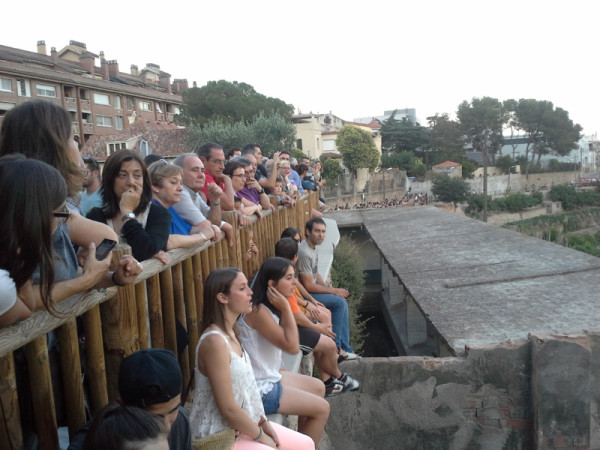
“Lead to the hanging place, where chimneys are smoking a warning of ash, ash, and the streets are strangely ebullient”
One by one (and I still don’t know how they did it), the guards slipped a noose around each witch’s neck and hung her from the gallows. “Make sure they’re all dead!” the middle-aged gent standing next to me bellowed, making me jump out of my skin.
Obviously satisfied they were indeed mock-dead, the hangman took each witch back down, and lined up the ‘corpses’ at the side of the gallows.
What with the forceful acting, the incessant drums and the het-up crowd, the whole performance was so lifelike that it was deeply disturbing, and I had to wonder at the children being allowed to look on from the crowd (albeit a good distance away). I escaped back to the hotel, the noise of the death drums seeming to sync with the thud of blood as I ran.
Escaldarium – a fiesta of hellfire and water
2014 is the 20th anniversary of the Escaldarium festival, which takes place on the Saturday night in the town’s main square, right on the witching hour itself.
Earlier in the evening you can catch Catalan Sardana dancing and live outdoor music, but the showstopper is the nine dances of the Caldes devils. You’re actively encouraged to take part in the alternating dances of fire and water, under the proviso that you don a hood, protect your eyes, and to quote the Town Council’s advice, “follow the devils’ instructions at all times”.
What seemed like the entire 17-thousand-strong population of Caldes crammed into the central plaza, excitedly awaiting the grand entrance of the dancing devils. Meanwhile, the Irish band on stage played a rousing set – original music that was part traditional Celtic knees-up and part Catalan folk melodies. The result was a triumph.
Suddenly, the lights dimmed, the pyrotechnics kicked in, flames burst forth and incandescent devils whirled like burning dervishes. The crowd were ecstatic, leaping around in the midst of the action, as the rain of sparks shot in every direction and the music picked up intensity.
With the first water dance, though, the mood subdued, and we raised our arms to be dowsed in the jets arcing out across the square.
In the heat of the Spanish summer, in the heart of Catalonia, experiencing the fusion of these two elemental forces was something truly unique, and all my expectations of a ‘typical’ Catalan correfoc were firmly extinguished.
After an hour of being singed and saturated, the Escaldarium dances came to an end, but not before fireworks had etched a flaming finale into the night sky. The crowd cheered, dripped slightly, and kept on partying, with live concerts taking place into the early hours.
For more photos of the fiesta, visit the Facebook page of local photographer Quim Dasquens, whose shots of the evening capture its spirit perfectly.
After the party – what to consume in Caldes de Montbui
Caldes has carved out a reputation for itself based on the quality of locally sourced ingredients and lovingly made products, and you’ll find plenty to choose from in the town’s shops and market stalls.
Carnivores will love Caldes, which is famous for its long spicy sausage (llonganissa), while pasta lovers should pick up a packet or two of fideus (short pasta noodles) made with local waters since the 1700s by generations of the Sanmartí family in their Caldes factory.
For a lunch or dinner that will put hairs on your chest, head to restaurant Robert de Nola, whose raison d’être is ‘quality Catalan cuisine’. This is the type of place where the chic, understated décor, courtesy of the waiters and personal attention of the chef immediately make you realise you’re in for a treat.
The menu is dominated by fresh, seasonal ingredients and complemented by an extensive choice of wines from their own cellar. Catalan classics like crema catalana and mató cheese with honey adorn the dessert list, but if it’s on offer, I recommend you opt for the typically Balearic pudding of flaó. This cheesecake-like sweet dates back to the Middle Ages, mixing mató cheese with herbs and mounted on a biscuit base.
Takeaway gifts for the hungry hordes back home include the locally grown honey (mel), which is perfect paired with mató cheese, typically made from goats’ or ewes’ milk and served as a dessert.
And to wash it all down? If you’re one of those people who likes life on the edge, try the locally brewed beer (those thermal waters get everywhere, seriously), called Calderina, introduced by the townsfolk as the world’s first ‘thermal beer’ in 2012.
If quaffing thermal waters isn’t your thing, a safer bet are the locally produced liqueurs, either the aniseed-sweet Anis Taronja, which dates back to 1918, or absinthe-green coloured Flors del Remei. Boasting supposedly salutary properties, this orange and green combo of cordials are consumed en masse by health-conscious locals, typically alongside the sweet toasted bread (that’s the best translation I can come up with) of ‘carquinyolis’ (or ‘carquiñoles’ in Spanish).
It’s fair to say these sweet bites are held in high regard by the locals, who will proudly regale you with tales of the traditional technique. Bakers would leave the almonds on which the recipe is based to blanch under the red-hot waters of the Lion Fountain, rendering them easier to peel and absorbing the health-giving properties of the thermal spring waters. This technique is no longer in use, but the repute of Caldes’ authentic carquinyolis is still a source of local pride.
When to visit
Ideally the second Saturday of July, when the Escaldarium festival takes place, but if you can’t manage that, aim for the second weekend in October when the town celebrates its Festa Major. Expect devils, drums and a downright demonic spectacle.
And if you really can’t manage either of those, visit on a weekend that takes in the second Sunday of the month, when from 10am till 2pm a local market is erected in the town’s main square.
Where to stay
Back in medieval times, Caldes de Montbui was famous as the leading spa centre in Catalonia and the second-ranking in the whole Iberian Peninsula, in terms of both the number and quality of its specialist spa facilities. Even as recently as the 19th century, Caldes had eight separate spas. Nowadays, though, your spa accommodation choices are happily more straightforward.
I stayed at the Hotel Balneari Termes Victoria, a 3-star hotel right off the main square, with air-con, free Wi-Fi and most importantly, an inbuilt spa facility where ‘thermalism’ is guaranteed to rejuvenate even the most jaded Barcelona inhabitant.
The view from my double room was enough in itself to kick start my senses, but the best was yet to come.
The basement floor of the hotel is given over entirely to the relaxing, revitalising powers of Caldes’ thermal waters, which are tapped and channelled into inbuilt saunas, swimming pools and jacuzzis.
If you’re a guest in the hotel, you’re welcome to use the spa facilities whenever suits you throughout the day, but for a seriously spine-tingling experience, book on to one of the hotel’s ‘nocturnal circuits’. This night-time bathing tradition goes back to Roman times, and essentially means you will walk into a tealight-lit, incense-infused retreat, where your biggest quandary in life is whether to slip into the bubble bath or sweat off the stress in the sauna.
While you’re deciding, take your pick from the mineral water, herbal teas, fresh fruit sticks and Cava on ice laid out enticingly for you in the relaxation zone. Yip, in Caldes they know how to sauna.
Catch a bus to Caldes
From Barcelona, you essentially have two options to reach Caldes de Montbui – car or bus. By car, head for the C-33 out of Barcelona and stay on this motorway till you get past Montcada, where you should look out for signs for the C-59. Once on the C-59, it’s a straight road to Caldes. By bus, it’s a skoosh – catch the Sagales bus from Passeig de Sant Joan no. 52 in Barcelona – the journey is a bargain four euros and takes around 50 minutes.

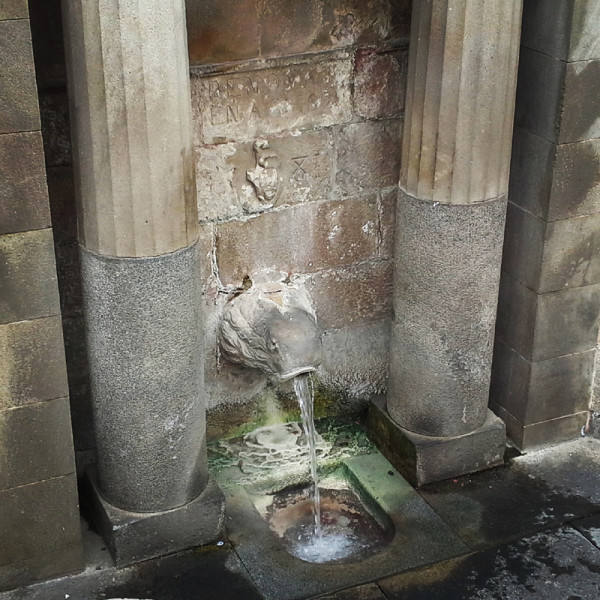
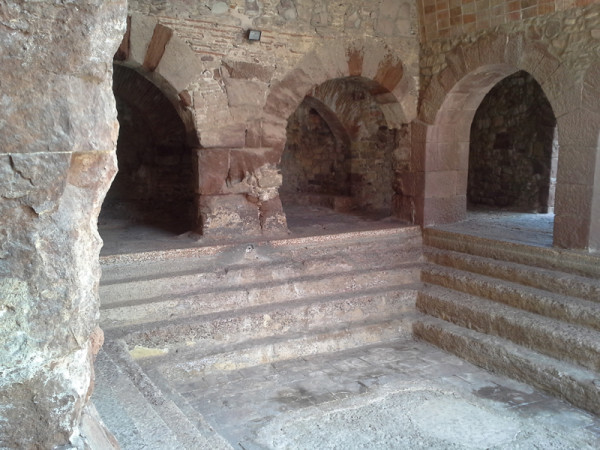
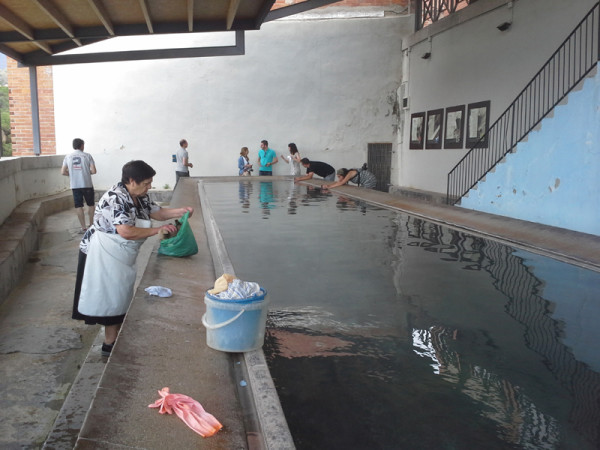
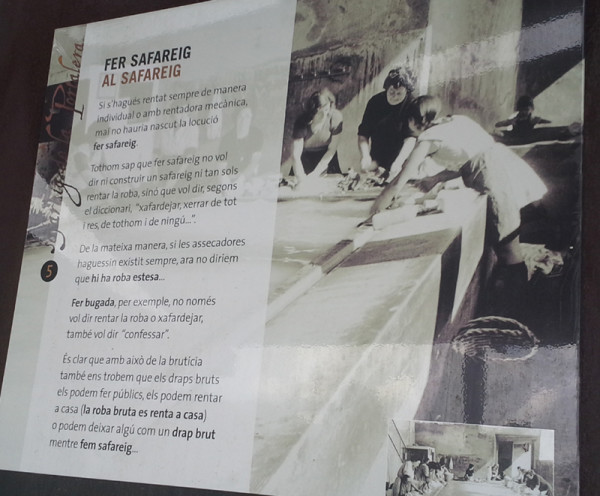

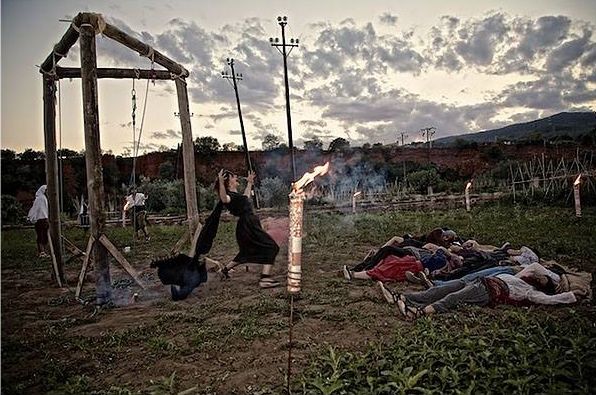
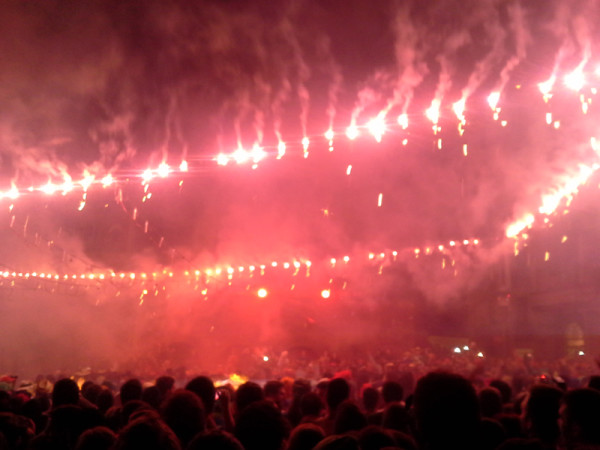
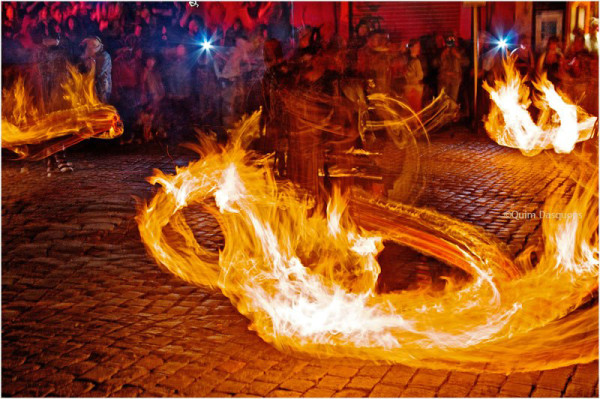

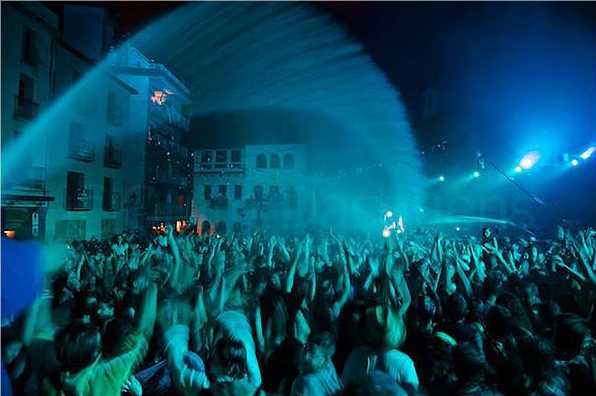
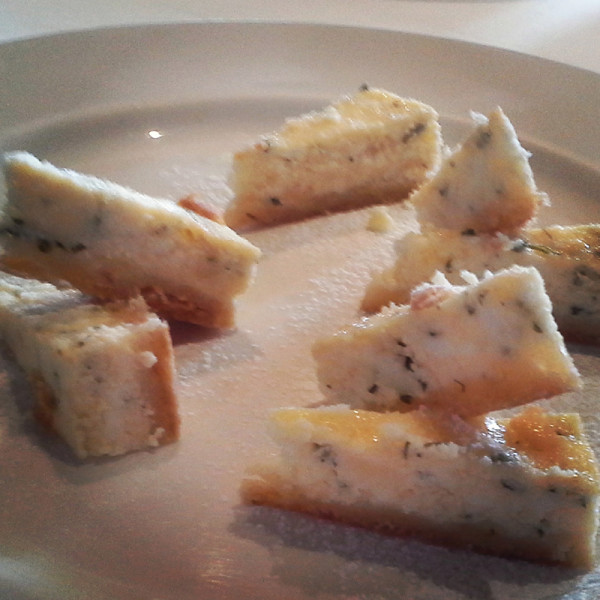
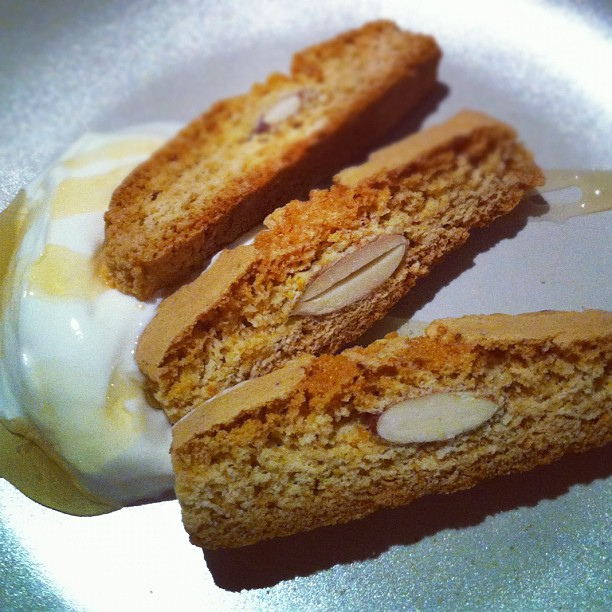
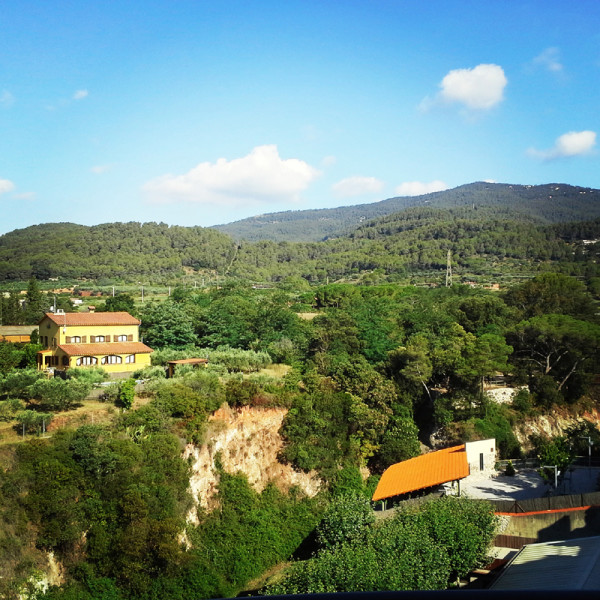
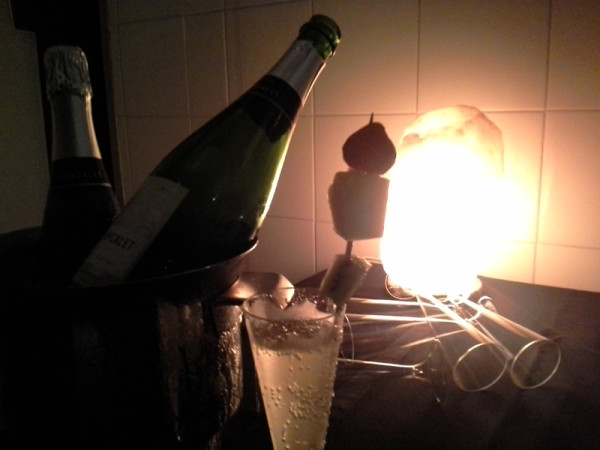
 Guiri is one of those words, like feminist or peely-wally, that I want to reclaim. Locals use it to refer to tourists - you know the ones - who stick out a million miles. No matter how long I live in Barcelona, that's always going to be me. (P.S. While Barça locally refers to the football team, Brits use Barca as shorthand for the whole city.)
Guiri is one of those words, like feminist or peely-wally, that I want to reclaim. Locals use it to refer to tourists - you know the ones - who stick out a million miles. No matter how long I live in Barcelona, that's always going to be me. (P.S. While Barça locally refers to the football team, Brits use Barca as shorthand for the whole city.) 







I love carquinyolis with a drop of moscatel wine.
Molly recently posted..A Private Tour in Cordoba Spain – My review
That does sound good, Molly. Sadly my Coeliac status meant I couldn’t try them, but god they looked good.
This festival looks absolutely fantastic Julie, the date has gone in the diary for next year. Thanks for sharing!
It was honestly brilliant, Claire – definitely make it a date for next year:)
Ouuu too bad I missed this festival! But now I know what to do next summer in Bcn!
Thanks so much for your blog ang this great info Julie!
If you can’t wait until next July, another good opportunity to visit Caldes de Montbui is on 10th-13th of October.
These days it’s the main festivity (Festa Major) of the town and there will be plenty of cultural activities, artisan markets, live music, shows and much more.
One of the activities I recommend you is the Correfoc, which is similar to Escaldarium festival, but only fire! 🙂
Hola Ferran! Completely agree – if visitors have missed the Escaldarium in July, the town’s Festa Major in October is another chance to experience the amazing Caldes atmosphere and facilites. A bit of autumnal fire therapy never goes amiss:)